Studying portrait photography and studio lighting
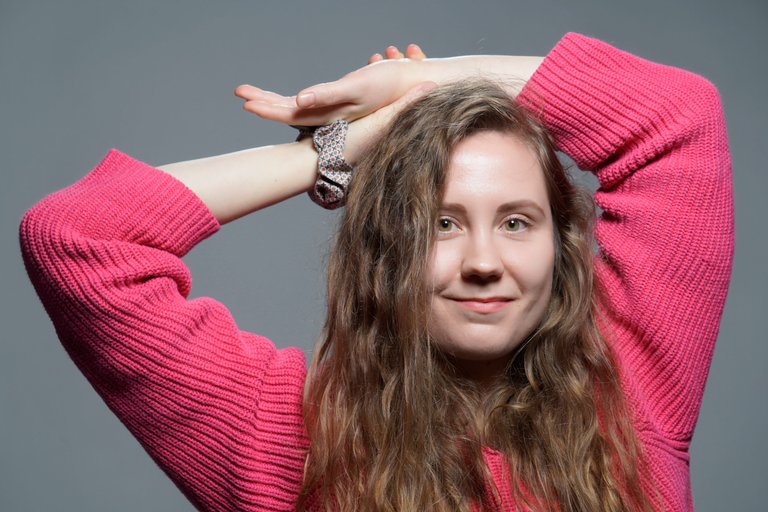
Some time ago, perhaps 6 months or more, I promised to write about my fine art photography studies. I started my studies last spring and have already studied more than just about portrait photography, but as it's the latest thing that I've done and I'm fascinated about photographing people who are willingly posing for me, I'm going to write about this first and perhaps about all the earlier stuff later.
This is Emma, one of my colleagues from work whom I asked if she would be interested in posing for us, 15 photographers on our portrait photography weekend studio session. On the first day she managed to be there for two hours, perhaps even two and a half and I can just imagine how rough that must have been. 15 people circulating you with their cameras. Day two, one and half hour, perhaps two but not anymore the only one sitting in front of all the cameras.
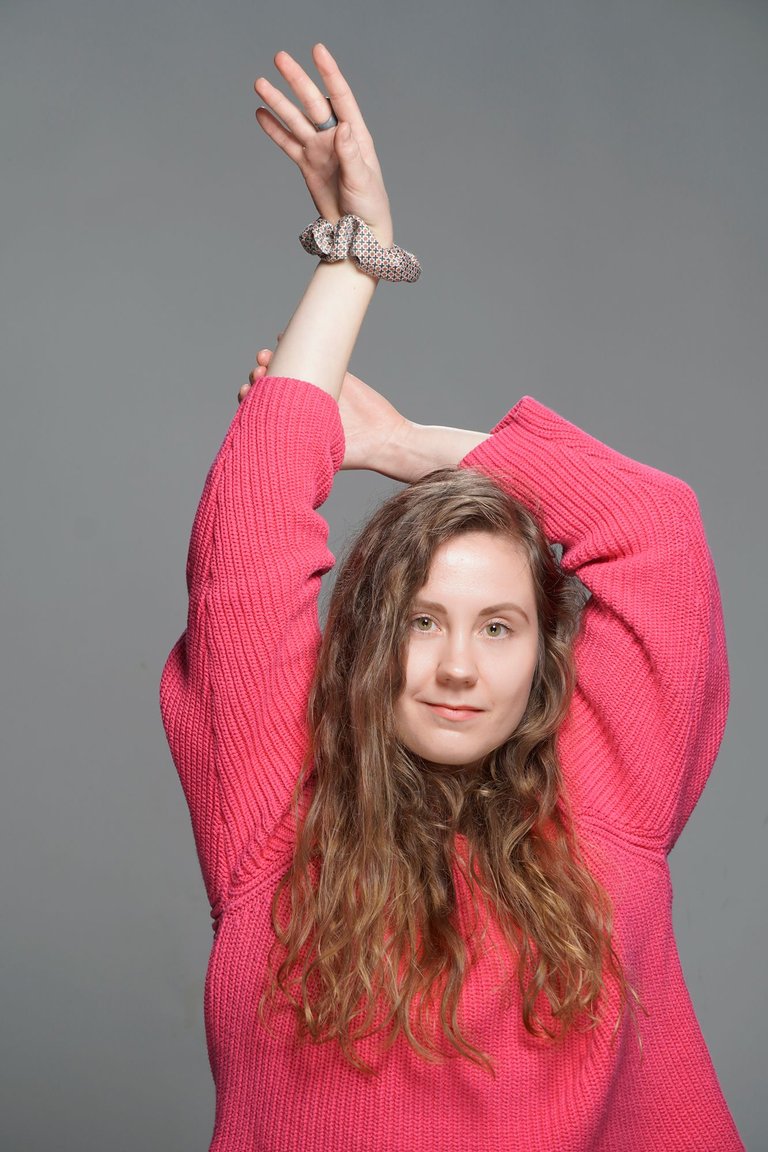 | 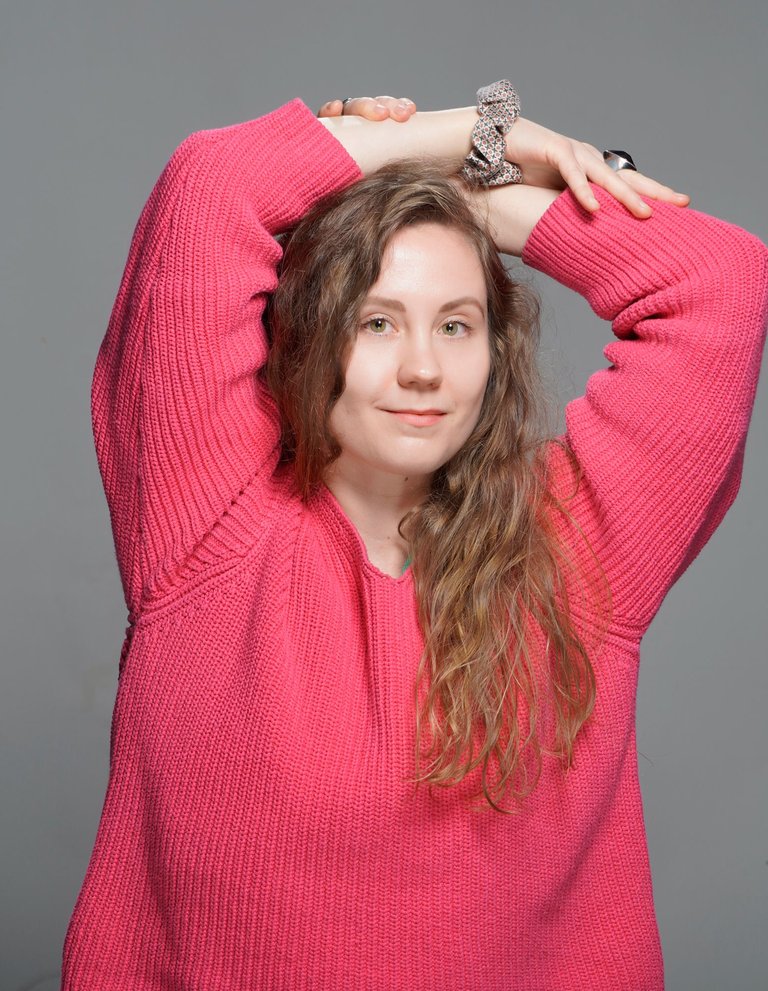 |
|---|
It's ridiculously easy to get good results when you have proper studio lights, soft boxes, honeycomb grid and a teacher who you can ask help anytime you need. Instructing people isn't that big of an issue for me, nor is seeing the light, especially when there is plentiful of it. But what is tricky is two things. First of all to know what I want and secondly, if I know what I want, how to get that. I do see the light but it doesn't always do the things I want it to do i.e. I see the problem but I'm unable to fix it.
Fortunately the purpose of our studio session was to learn lighting and try different combinations, not to get perfect fashion photos or absolutely brilliant fine art photos that have a deep social meaning and message in them. Not yet anyway.
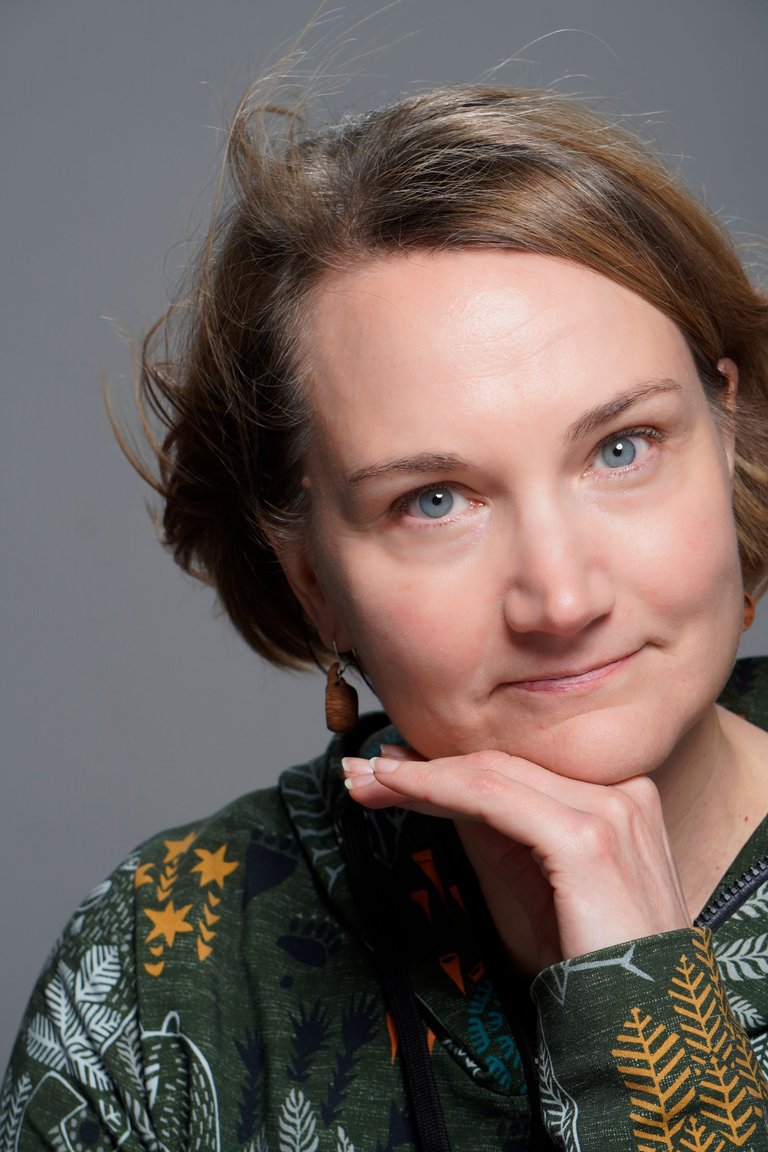 | 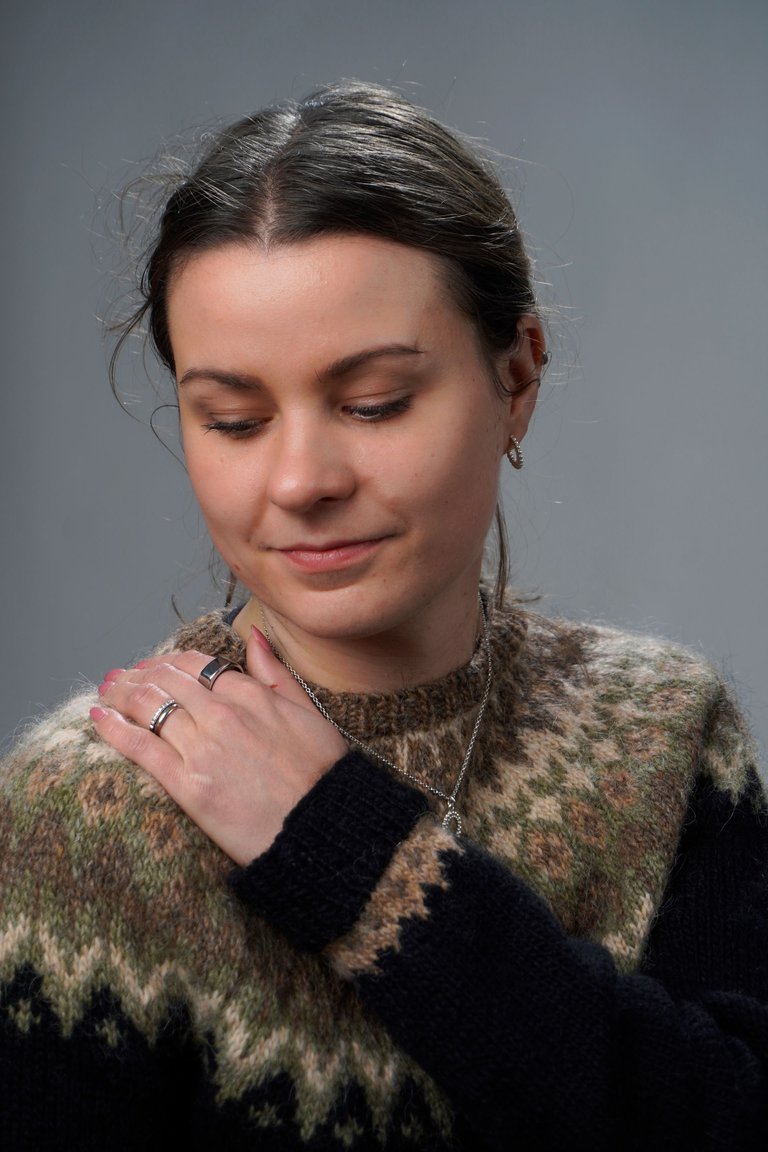 |
|---|---|
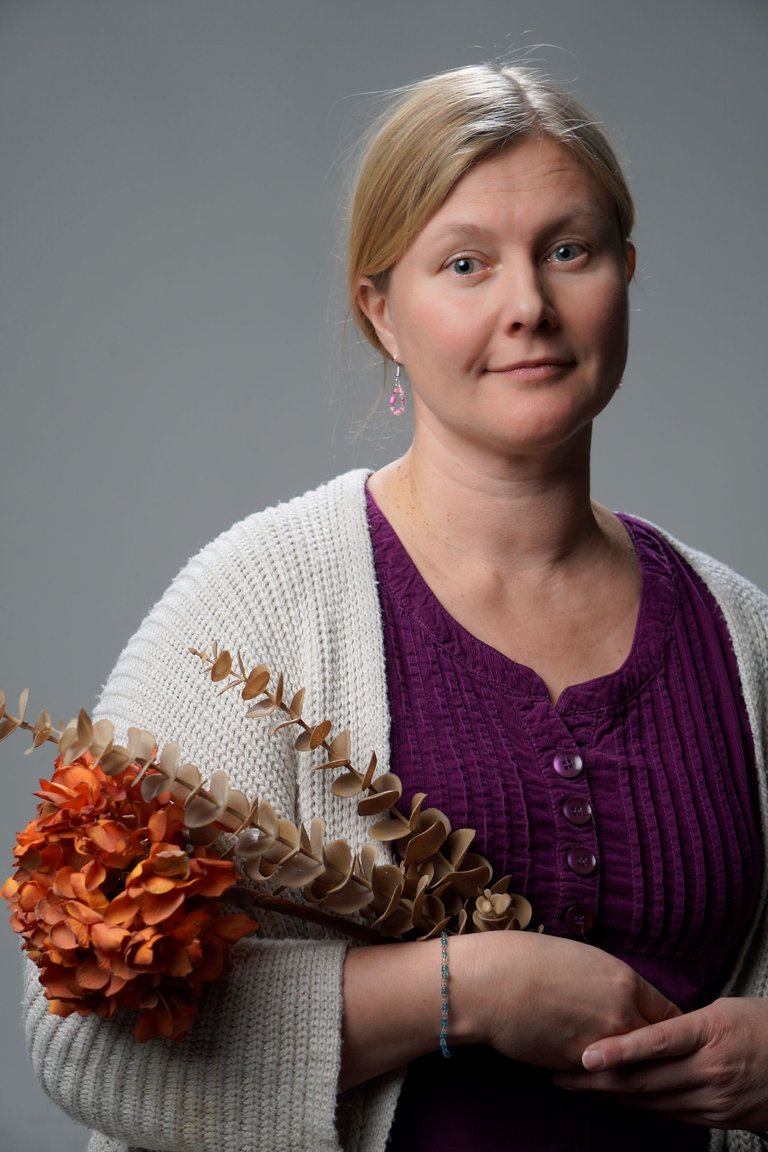 | 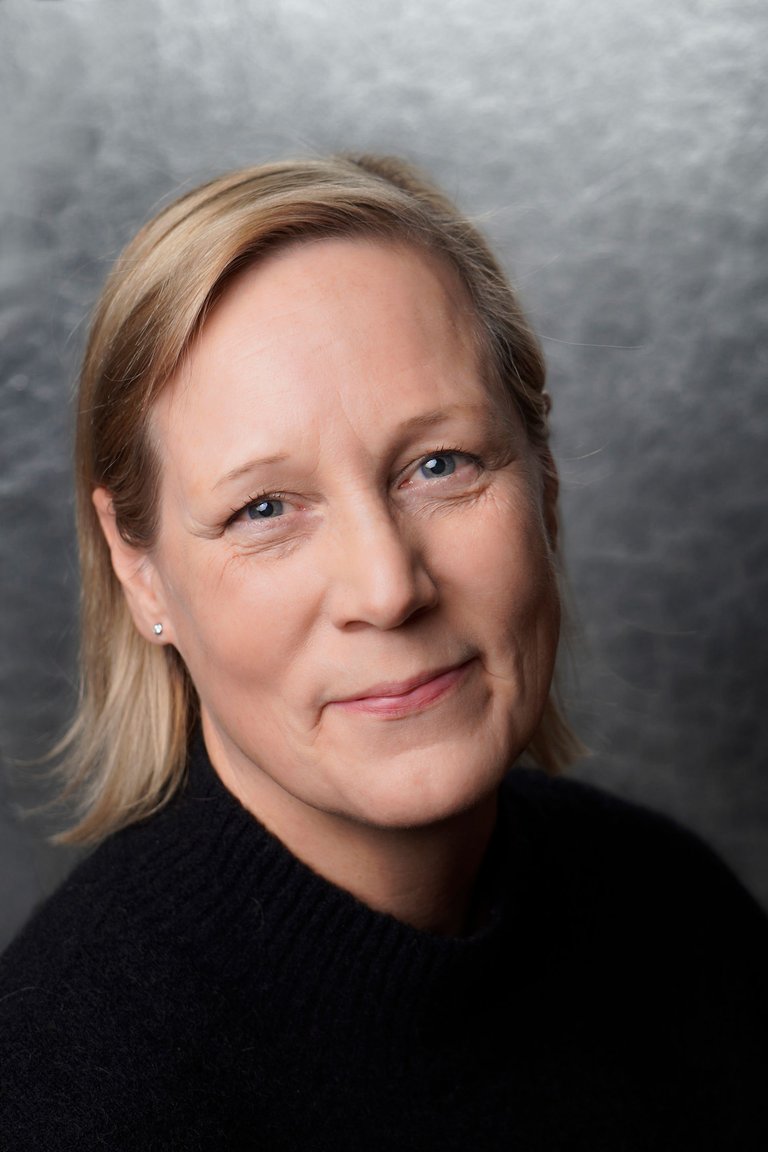 |
My class mates, fellow photographers from top left to bottom right: Marjut, Essi, Erika and Kati. Excellent photographers and yes, I have their permission to publish their photos.
On day one we had one set where we briefly tried different traditional lighting setups: split, rembrandt, loop, broad, short, paramount/butterfly + clamshell. On day two we had three different sets where we could try any combinations we wanted with two models and class mates who were willing to pose.
All the photos above are taken with professional studio flash lights and all the photos below are taken with professional continuous led panel lights. The difference in the amount of light, even though there where three led panels, all of which were on full power, is huge. Flash is so much stronger. (And those studio flash lights were something like extra mega ultimate maximum overload brighter than bright lights.)
All the above photos have aperture f/4.5. to f/8, shutter speed 1/125s or 1/160s and ISO 100. But in the continuous light I had to use as slow as 1/30s shutter speed and risk the photo shaking as the lens I was using wasn't that light sensitive, especially when using tele. I could have cranked the ISO up but I didn't want to.
 | 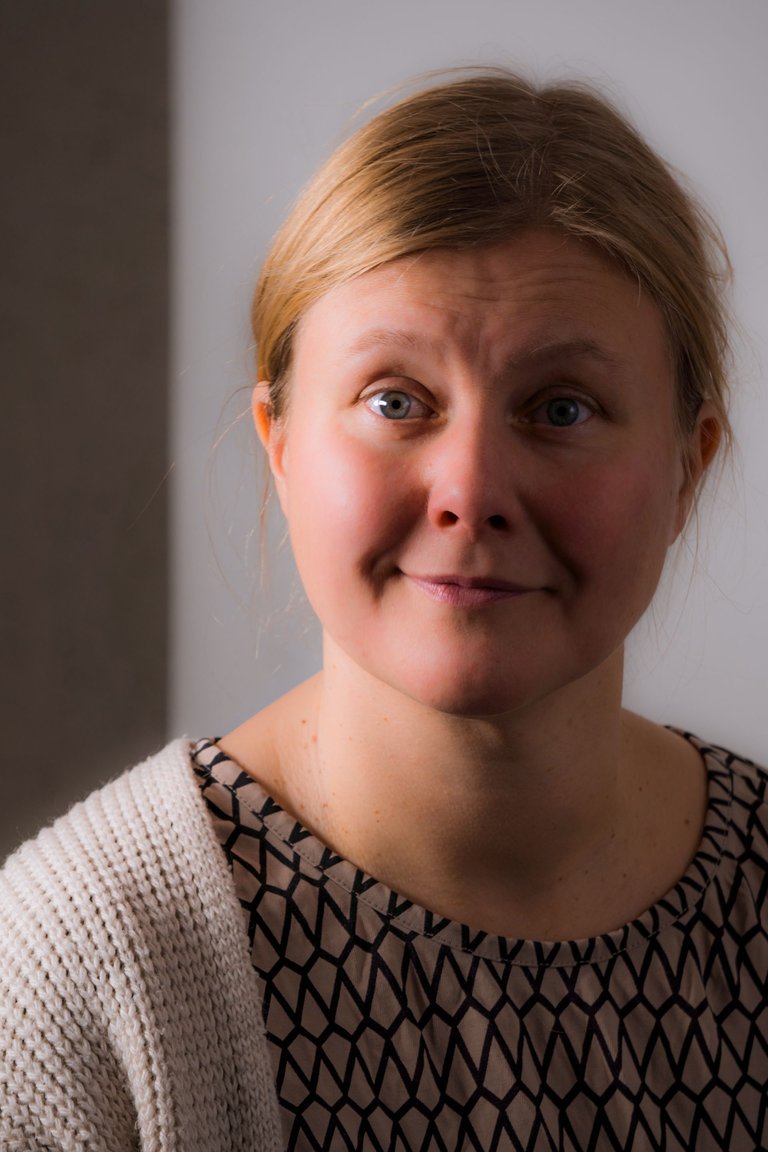 |
|---|
f/6.3, 1/30s, ISO 100.
The skin. See the difference. Although I have post processed the continuous light photos a bit I didn't have to do that at all to the flash light photos. All the models have little or almost no make up so all that is left is the amount of light and the magic my camera does to the preview photos. Yes, you read correctly. The preview photos. The jpg. Sometimes my Sony A6400 gives so good preview photos, especially this time with the studio flash lights that the little editing I did, I did on those jpg photos, not the raw files. (If this would have been more than just a lighting exercise I would have done the post processing to the raw file.)
 | 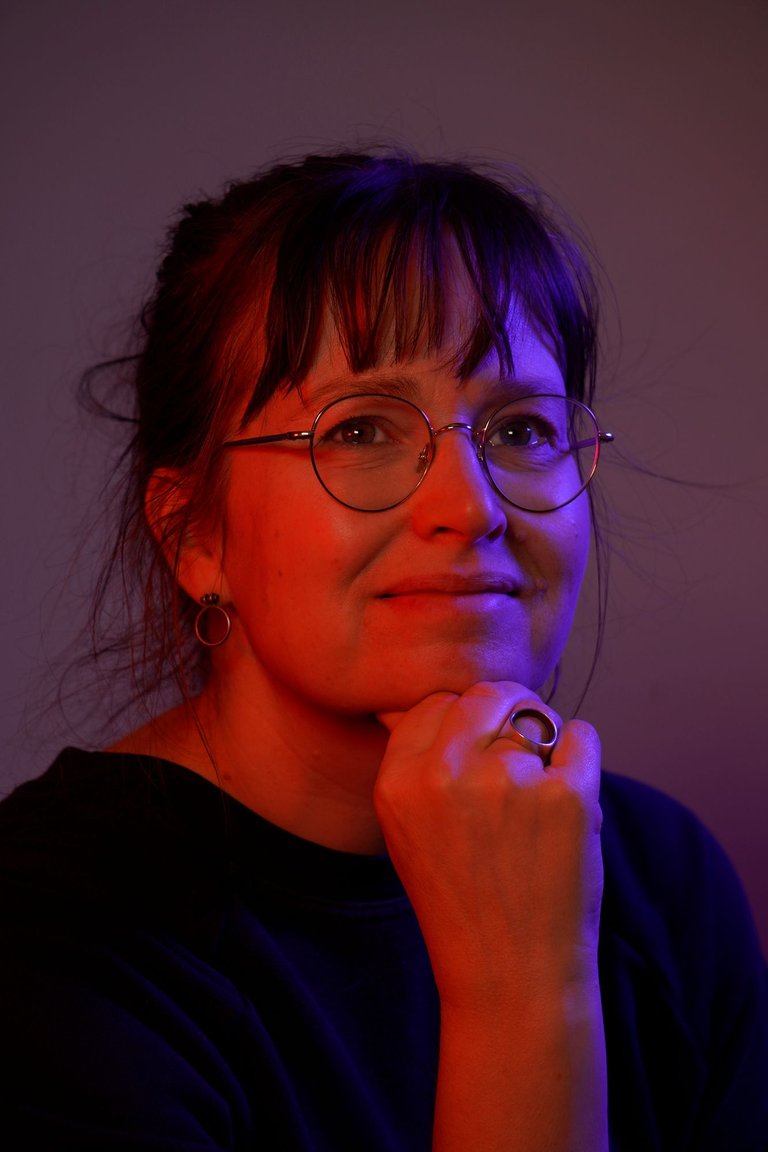 |
|---|
All the talk that we had with the teacher about make up, that photography make up is totally different thing than just a day time make up is true but so is the amount and the direction of the light. With light you can enhance or hide with it. Now the tricky part is of course how.
I think I want my own studio.
Model: Anonymous
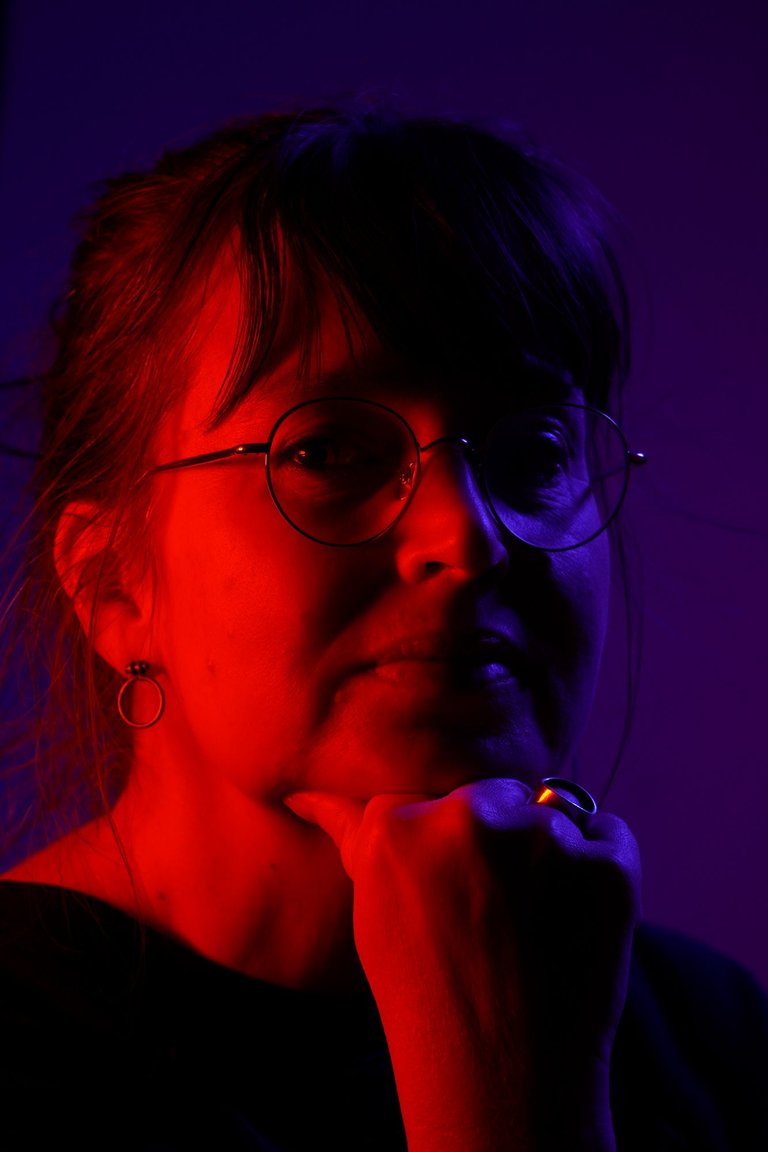
!LUV
!BEER
How wonderful to be able to experiment and play with lights in a studio, and even more so with a teacher by your side. I loved this post, I love that you share what you learned, and the process behind it. This world of photography seems easy, but it's not. I loved the photos.
Thanks!
Indeed it is! So many times I've wondered when looking at the results that what was I thinking when taking the photos. For every good photo there are hundreds of misses. But then again, sometimes it takes just few clicks to get good shots.
cool to see some friendly faces :) !